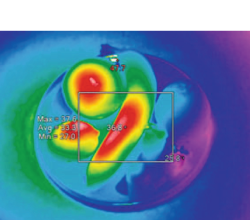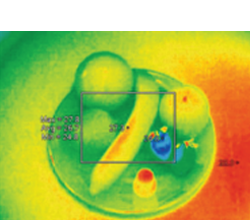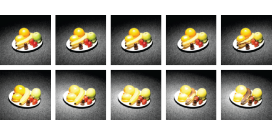


The materials used in the construction of a lighting fixture have the greatest influence on its effectiveness. Optical materials are used to diffuse the light, modify its distribution and change its spectral composition. They are divided into two types, those that reflect and those that transmit. Aluminium, with various surfaces finishes is the most common material used for reflectors, whilst glass and plastics are used for transmitting parts. Every material has different reflectance and absorption properties, but generally the more effective the materials used the lower the amount of light lost on the surfaces and the higher the efficacy of the luminaire.
The part of the light spectrum visible to human eyes ranges between infrared (IR) and ultraviolet (UV). Even though we cannot see IR radiation we can still sense it as heat. All light sources emit a certain amount of IR radiation, energy that is lost as heat rather than being useful as light, therefore, the lower the amount of IR radiation a light source emits the more effective it is.
From, this point of view, the incandescent bulb is the least effective as 95% of the energy they consume is emitted as heat, and only 5% as light. In retail applications, this factor is of vital importance. A light source that emits a high proportion of heat will consume a lot of energy to provide very lithe light. A comfortable temperature is important in any kind of store, as a comfortable customer is more likely to stay, browse and purchase. Air conditioning is a vital component of almost every retail space, one that consumes a lot of energy with a direct correlation existing between increased lighting energy consumption and air conditioning energy consumption. As a result, the use of light sources that emit low levels of heat not only provide energy savings within the lighting system, but also reduce the cooling load placed on the air conditioning system, which in turn results in energy savings.
When people think of the dangers associated with broken lamps it is usually of being cut. Infact the risks connected with most, types of light source are far greater and have a serious impact on our health as well as on the environment. The main reason why we say this is that most types of light source certain mercury, highly toxic heavy metal an vital component especially of fluorescent and metal halide lamps. Despite a great deal of research being done into finding a substitute for mercuyin light sources, none has yet been found. Alternative light sources that are not dangerous to people and the environment are ao costly that they are not financially viable for mass use.
Lighting designers must therefore consider the ecological impact of the light sources they use. Newer 'eco' fluorescent lamps do contain less mercury, but in this respect LED comes to the fore as the safest and most responsible option as they contain no mercury at all.
